WHAT CAN MEDIEVAL CASTLES TEACH US ABOUT INVESTING IN STOCKS?
Economic moats are characteristics that help protect a company’s profitability just as Castle moats help protect people inside
The presence and development of economic moats can help a business have long term success
We believe the identification and evaluation of economic moats is an integral part of analyzing a company’s stock
Part 1 of a Series on Economic Moats
Figure 1 The Tower of London
What is a moat?
Nestled along the north bank of the River Thames in the heart of London, a massive medieval fortress is juxtaposed against a modern city skyline. Its tower rises in the center surrounded by two rings of stone walls followed by a wide grassy ditch and an inward facing retaining wall. My wife and I visited London with some friends in the Spring of 2019. I enjoy a variety of games but one of my favorite genres is military strategy, so The Tower of London was a must-see attraction! This fortress was extremely important in the control of London and the surrounding area since its construction in 1066 by William the Conqueror.
Beyond projecting power, the Tower of London’s purpose was to protect what was inside and provide the occupying force with a strategic advantage. For those that know their castles, that grassy ditch outside of the main wall is the moat and was once filled with water. Moats were used to prevent an enemy from tunneling under the castle walls and to guard against the use of siege equipment such as battering rams and siege towers. Siege towers were basically elevators on wheels used to scale a castle wall. Moats were key to beefing up defenses.
What does this have to do with investing?
Investors borrow the term “moat” to describe a form of protection of a company’s profitability against would be competitors. In technical terms, it allows a company’s return on equity to exceed its cost of equity for a period of time that would not otherwise be possible. As an example, a drug company files a patent on a drug granting exclusive rights to market a compound to treat a specific ailment for a defined length of time. That patent creates a moat around the company’s profits because it creates a legal barrier to any competing company copying the drug until it expires. This is why drug companies can be so lucrative when they are awarded a patent for a disease, especially if it is the only or best available treatment. Moats in business can exist in other forms such as branding, access to low cost resources, government regulation, etc. The most successful companies build a moat around their business allowing them to be extremely profitable and resilient to new competition. We will explore this concept further in future posts.
Our Take
At Aurora, we consider the presence of a moat to be a requirement to investing. We believe clients are best served by investing in quality businesses at attractive prices. Sometimes this means missing the latest fad, but we believe our focus on strong durable business models will allow our strategies to stand the test of time and ultimately lead to attractive outcomes for our clients. In future posts, I will shed more light on the types and sources of moats as well as how we incorporate this concept into our research process.
Invest Curiously,
Austin Crites, CFA
Austin Crites is the Chief Investment Officer of Aurora Financial Strategies, a financial advisory firm based out of Kokomo, IN. He can be reached via email at austin@auroramgt.com. Investment Advisory Services are offered through BCGM Wealth Management, LLC, a SEC registered investment adviser. This blog does not constitute advice. This is not an offer to buy or sell securities. Advisor is not licensed in all states.


